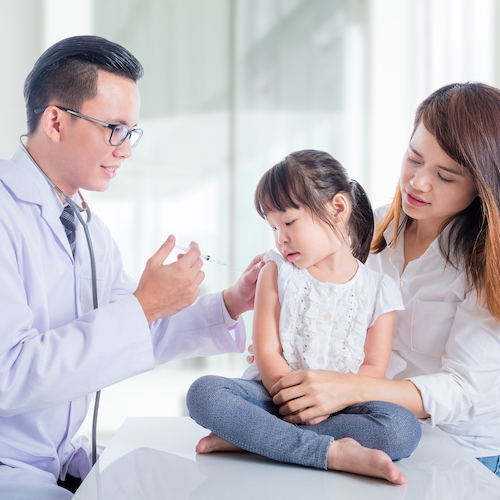Early detection can be a game changer when it comes to preventing diseases. But a lot of people are either hesitant or unaware about undergoing screening tests meant to check for certain health issues. Exams can be quite expensive and even inaccessible at some times.
However, there are some health checks you can do on your own to help spot potential issues right away. Self-checks can be done individually or with the help of a partner, and can help make a difference in your health care. Here are a few important ones for women.
- Breast self-exam
Helps detect: Breast infection or breast cancer
When to do: Once a month. If you are still menstruating, do this about 1 week after a period; if you are already menopausal, do this anytime during the month.
This type of self-exam helps check for lumps or spots that may indicate a breast infection or breast cancer. A breast self-exam entails both visual and manual inspection, as highlighted in this informative tutorial and in this guide:
Once you spot any issues on your breasts, consult a gynecologist immediately to determine if there are possible health issues.However, this self-exam is not meant to replace formal screening tests like mammograms. So it is best if you can undergo these tests annually, too.
- Skin self-exam
Helps detect: Skin cancers like melanoma
When to do: Once a month before or after you showerMoles, which can appear anywhere on your body, can be indicators of skin cancer. Health experts advise you look out for the “ABCDEs” of melanomas both in new moles or existing ones.. The ABCDEs of melanomas are:
- Asymmetry: the mole does not have a uniform shape
- Border: the mole tends to have a crooked or irregular border
- Color: the mole can exhibit different brown shades or even a mix of red, white, and/or blue hues
- Diameter: the mole is more than 6mm in diameter (bigger than the size of a standard pencil’s eraser)
- Evolving: wherein the mole looks different from others near it or you notice changes size, shape, or color
Here is a detailed guide on the moles you should watch out for:

If you have a lot of moles in your body, do not panic. These are usually harmless or normal when they have: an even black, brown, or tan color; are either flat or raised; and have a symmetrical round or oval shape. However, when they have any one or all of the ABCDEs mentioned above, consult a dermatologist as soon as possible so that further evaluation can be done.
Because moles can appear in virtually any part of your body, you can enlist someone to act as your second pair of eyes. They can help you check moles in body parts you are not able to see right away.
- Blood pressure
Helps detect: High blood pressure levels that can be a precursor to certain diseases
When to do: Daily, preferably at the same time each dayUntreated high blood pressure levels raises your risk for many conditions such as heart attacks, stroke, heart failure, atherosclerosis (build-up of fat in the arteries), kidney failure, and even eye damage.
To check your blood pressure levels using a BP apparatus, make sure to rest first for five minutes prior to taking the measurement. Sit straight with both feet on the floor with your arm supported at chest height. Ensure that the cuff is placed directly on your skin and not on clothes. Do not smoke, drink coffee or alcohol, or exercise at least 30 minutes before you check your blood pressure levels so the outcomes will not be affected.
Here is a guide to interpreting your blood pressure measurements:

If you are doubtful about your blood pressure reading at first, wait for a few minutes and do some slow, deep breathing before checking again. Once you have taken your blood pressure, record the values in a journal or mobile app to see if there is a pattern. Consult a doctor if you notice consistently elevated blood pressure readings.
Incorporate these self-checks into your regular routines so you know where you are from a health standpoint. Periodic routine testing under the supervision of a health professional is still important to determine your current health status. If you have the means and opportunity, it’s best to have yourself tested at least annually.
References:
https://my.clevelandclinic.org/health/diagnostics/3990-breast-self-exam
https://www.webmd.com/skin-problems-and-treatments/skin-cancer-skin-self-exam
https://www.health.com/condition/skin-cancer/self-checks-women
https://www.nhs.uk/conditions/melanoma-skin-cancer/
https://www.nhs.uk/conditions/moles/
https://www.goredforwomen.org/en/know-your-risk/risk-factors/high-blood-pressure-and-heart-disease
https://www.beaumont.org/conditions/melanoma/abcde’s-of-melanoma
https://www.aad.org/public/diseases/skin-cancer/find/at-risk/abcdes








